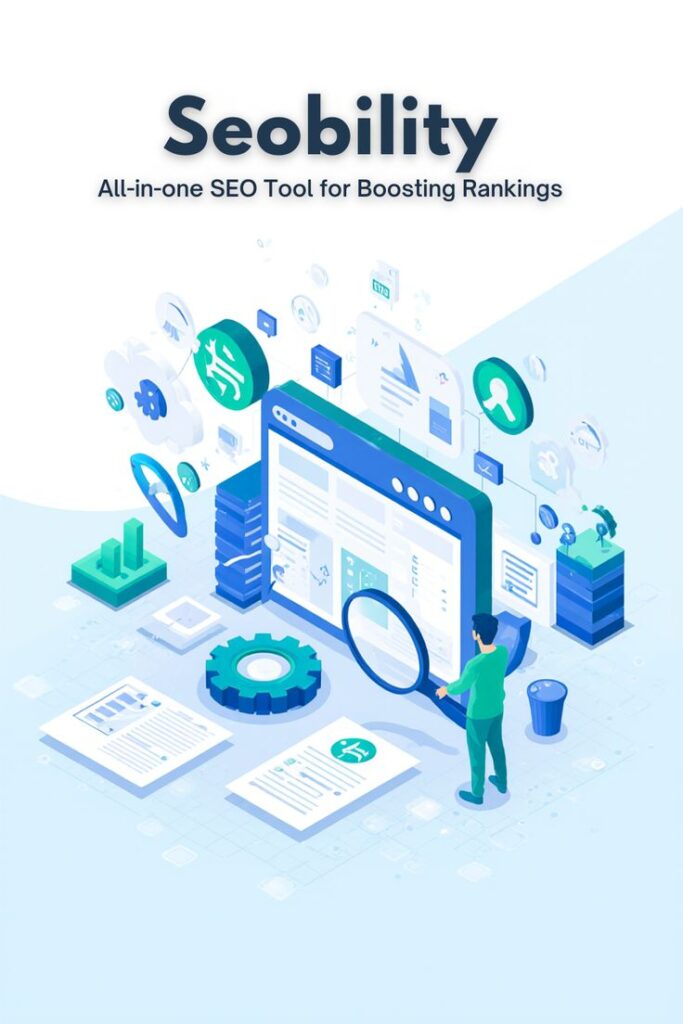Blogging in 2025 looks different than it did just a few years ago. Algorithms shift, attention spans get shorter, and competition grows stronger. To grow today, you need a clear strategy that balances strong foundations, engaging content, and smart use of technology.
You no longer succeed by posting randomly or relying on outdated tactics. You succeed by creating purposeful content, optimizing it for visibility, and building trust with your audience. When you combine consistency with the right tools and methods, you set yourself up for long-term growth.
The good news is that you don’t need to guess what works. You can focus on proven strategies that help you connect, stand out, and turn your blog into something sustainable.
Key Takeaways
- Build a solid foundation with clear goals and consistent effort
- Create engaging content that connects and drives interaction
- Use smart optimization and tools to grow reach and impact


Essential Foundations for Blogging in 2025
Successful blogging in 2025 depends on knowing exactly who you want to reach, selecting tools that fit your needs, and building a consistent publishing routine. These foundations help you stay focused, reduce wasted effort, and create content that connects with readers.
Defining Your Target Audience
You need to know who you are writing for before you publish a single post. A clear target audience guides your tone, content style, and even the platforms you promote on. Without it, your blog risks becoming too broad or irrelevant.
Start by identifying key demographics such as age, location, and interests. Go deeper by considering pain points, goals, and the type of content your audience prefers—short tips, in-depth guides, or visual posts.
A simple table can help you clarify:
| Audience Type | Needs/Goals | Preferred Content |
|---|---|---|
| Young professionals | Career growth | How-to guides |
| Hobbyists | Skill improvement | Tutorials & visuals |
| Small business owners | Marketing help | Case studies |
By defining these details, you can create blog posts that feel personal and valuable to the people you want to reach.
Choosing the Right Blogging Platform
The platform you choose affects your workflow, visibility, and growth potential. In 2025, you have more options than ever, from traditional platforms like WordPress to newer, AI-assisted tools.
Think about what matters most for your blog. If you want full control and customization, WordPress or self-hosted solutions are strong choices. If you prefer speed and built-in features, platforms like Substack or Medium may fit better.
Also consider SEO support, integrations, and monetization options. For example, WordPress offers extensive plugins for SEO, while Substack focuses on email subscriptions. Match the platform’s strengths to your goals instead of following trends.
Choosing wisely now saves you from migrating later when your blog grows.
Establishing a Content Calendar
A content calendar keeps your blogging consistent and reduces last-minute stress. Instead of scrambling for ideas, you’ll know exactly what to post and when.
Start by mapping out core topics you want to cover over the next few months. Break them into weekly or bi-weekly posts depending on your capacity.
Use tools like Google Calendar, Notion, or Trello to organize your schedule. Include details such as:
- Post title or working idea
- Target keywords
- Publishing date
- Promotion channels
This structure helps you stay on track and ensures your blogging supports long-term goals like SEO growth and audience trust. Consistency matters more than posting daily, so set a pace you can actually maintain.


Content Creation and Engagement Strategies
You need a clear plan for what to publish, how to connect with readers, and which formats keep people engaged. Strong content creation relies on strategy, storytelling, and the ability to balance long-form depth with readability.
Developing a Winning Content Strategy
A solid content strategy starts with knowing your audience. Define who you want to reach, what problems they face, and how your blog can provide solutions. Use analytics tools to track behavior and refine your approach based on real data.
Consistency matters. Create a publishing schedule that you can maintain without sacrificing quality. A simple calendar with weekly or biweekly posts helps you stay organized and reliable.
Mix different content types to keep readers interested. For example:
- How-to guides for practical advice
- Opinion pieces for perspective
- Case studies for real-world examples
- Visual content like infographics or charts
When you align your topics with search intent and optimize them for SEO, your content becomes easier to discover and more likely to attract consistent traffic.
Storytelling Techniques for Connection
Storytelling makes your writing more relatable. Instead of just presenting facts, frame your content around real experiences or scenarios that readers recognize. This creates a natural connection and keeps them reading longer.
Use a simple structure: setup, challenge, and resolution. Start with a relatable situation, describe the problem, then show how it can be solved. This approach works for tutorials, case studies, and even personal reflections.
Keep your tone conversational. Write as if you’re speaking directly to one person rather than a broad audience. Adding short anecdotes or examples can make your points easier to remember.
Visuals also help tell stories. Screenshots, short videos, or even a quick diagram can illustrate a process better than text alone. This makes your content more engaging and accessible.
Creating Long-Form and Engaging Content
Long-form content gives you space to cover topics in depth, which helps build credibility and authority. Aim for posts that are at least 1,500–2,000 words when the subject requires detailed explanation.
Break up long text with headings, bullet points, and tables so readers can scan easily. For example:
| Section | Purpose |
|---|---|
| Introduction | Hook attention |
| Main Points | Deliver value |
| Examples | Show application |
| Conclusion | Reinforce takeaway |
Engagement comes from more than length. Add interactive elements such as polls, embedded media, or downloadable resources. Encourage comments by asking specific questions at the end of posts.
Finally, update older long-form content regularly. Refreshing data, links, and examples ensures your posts stay relevant and continue to rank in search engines. This keeps both new and returning readers engaged.


SEO and Optimization Best Practices
You need to focus on aligning your content with search intent, adapting to new search behaviors like voice queries, and ensuring your site remains accessible and easy to use. These steps help your blog rank higher in search engines while also keeping readers engaged.
Keyword Research and Search Intent
Keyword research in 2025 requires more than just finding high-volume terms. You should analyze search intent to understand whether users want information, a product, or a quick answer. Matching your content to intent increases relevance and improves your chances of ranking.
Use tools like Google Search Console, Ahrefs, or SEMrush to identify terms with clear intent. For example:
| Intent Type | Example Query | Best Content Type |
|---|---|---|
| Informational | “how to start a blog in 2025” | Guides, tutorials |
| Transactional | “best SEO software 2025” | Product reviews, lists |
| Navigational | “Wix SEO login” | Direct links, resources |
Focus on long-tail keywords since they often reflect specific needs. Combine this with data insights from your analytics to refine which topics bring in the right audience.
Optimizing for Voice Search
Voice search continues to grow with smart assistants and mobile devices. Unlike typed queries, voice searches are often longer and phrased as questions. You should optimize by including natural language and conversational phrasing in your content.
Add concise answers in your posts that could be pulled into featured snippets. For example, start a section with a direct response in one or two sentences, then expand with supporting details.
Using structured data markup helps search engines understand your content better. Prioritize FAQs, how-to content, and location-based queries since many voice searches are local. Keep sentences short and clear to increase the likelihood of being selected by voice-driven results.
Improving User Experience and Accessibility
Search engines reward websites that are easy to navigate and accessible to all users. You should focus on fast-loading pages, mobile responsiveness, and clear structure. A slow or cluttered site can push visitors away and lower your rankings.
Accessibility is equally important. Add alt text to images, use proper heading levels, and ensure color contrast meets accessibility guidelines. This benefits both users and SEO since search engines can better interpret your content.
Improve readability by using short paragraphs, bullet lists, and descriptive links. A positive user experience reduces bounce rates and increases engagement, which signals to search engines that your content is valuable.


Leveraging Technology and Multimedia
You can strengthen your blog by combining smart technology with engaging multimedia. AI tools help you save time and improve content quality, while videos, podcasts, and interactive visuals keep readers interested and encourage them to return.
Integrating AI Tools for Bloggers
AI tools can make your blogging workflow faster and more efficient. You can use them to generate content outlines, suggest headlines, or refine grammar and style. Tools like Jasper, Copy.ai, or Grammarly help you draft posts more quickly while maintaining clarity.
Beyond writing support, AI also assists in keyword research and SEO optimization. Platforms such as Surfer SEO or Clearscope analyze search intent and recommend improvements so your posts rank better. This means you spend less time guessing and more time producing content that reaches readers.
You can also automate repetitive tasks. For example, AI scheduling tools post content across platforms, while chatbots handle reader questions. By adopting these tools, you free up more time to focus on strategy and creativity.
Key uses of AI tools:
- Content generation and editing
- SEO optimization
- Social media scheduling
- Audience engagement through chatbots
Incorporating Videos and Podcasts
Adding videos and podcasts to your blog helps you reach people who prefer audio or visual content. A short video tutorial or explainer can clarify complex topics faster than text alone. Podcasts give your audience a way to engage with your ideas while multitasking.
You don’t need a large production setup to get started. A good microphone, basic editing software, and consistent publishing are often enough. Embedding YouTube videos or hosting a podcast episode directly on your blog increases time spent on your site.
Consider repurposing your blog posts into podcast episodes or video summaries. This multiplies your reach without requiring entirely new content. It also allows you to connect with audiences across platforms like Spotify, Apple Podcasts, or YouTube.
Tip: Keep videos under 10 minutes and podcasts between 20–40 minutes for better engagement.
Using Infographics and Interactive Content
Infographics make complex information easier to digest. By turning statistics or step-by-step guides into visuals, you help readers understand and remember your content. Tools like Canva or Venngage let you design professional-looking graphics without advanced skills.
Interactive content goes a step further. Quizzes, polls, or clickable charts invite readers to participate instead of just consuming. This boosts engagement and can also provide insights into your audience’s preferences.
For example, a travel blog could include a quiz on destinations, while a finance blog might offer an interactive budget calculator. These features encourage readers to share your content, which increases visibility.
Examples of interactive content to try:
- Quizzes and polls
- Calculators or budget tools
- Clickable maps or timelines
- Interactive charts and graphs


Building Community and Audience Loyalty
You strengthen loyalty when readers feel connected to you beyond individual posts. Consistency, interaction, and accessibility across platforms help turn casual visitors into long-term followers who actively support your work.
Newsletter and Email List Growth
A newsletter gives you direct access to your readers without relying on algorithms. Unlike social media feeds, email lands in inboxes where it’s more likely to be seen. You can use it to share updates, highlight new posts, or provide exclusive insights.
To grow your list, offer something of value in exchange for sign-ups. This might be a short guide, a checklist, or early access to new content. Keep the sign-up form simple and visible on your blog and social channels.
Segmenting your email list helps you send more relevant messages. For example, you might organize subscribers based on interests like blogging tips, case studies, or tutorials. This makes your communication feel more personal.
Key practices for newsletters:
- Send on a consistent schedule.
- Keep subject lines clear.
- Balance promotional content with helpful information.
Community Building Through Forums and Social Media
Forums and social platforms let you create spaces where readers interact with you and each other. A small forum on your site or a private Facebook or Discord group can encourage ongoing conversations. These platforms give your audience a sense of belonging.
You can also use Instagram, YouTube, or LinkedIn to extend your community. Instagram works well for quick updates and visuals, while YouTube allows deeper explanations through video. LinkedIn is useful if your blog focuses on professional topics.
The key is to choose platforms where your readers already spend time. You don’t need to be everywhere—focus on 1–2 channels and build them consistently. Encourage members to share their own experiences, not just respond to your posts.
Tip: Use polls, Q&A sessions, or live streams to make interactions more engaging.


Encouraging Discussion and Feedback
Conversations around your content build trust and show that you value your readers’ opinions. Simple actions like replying to comments or acknowledging questions help people feel heard. Over time, this encourages them to return and participate more often.
Ask open-ended questions at the end of your posts to spark discussion. On platforms like YouTube or Instagram, invite viewers to share their thoughts in the comments. On LinkedIn, you can start professional debates or share case studies that invite responses.
Feedback also helps you improve your blog. Use surveys or polls to learn what topics your audience wants next. This not only guides your content but also shows that you’re listening.
Ways to encourage feedback:
- Add a short poll at the end of newsletters.
- Highlight thoughtful comments in future posts.
- Thank readers publicly for their contributions.


Monetization and Growth Opportunities
You can grow your blog into a reliable income source by focusing on methods that reward both your effort and your audience’s trust. Using a mix of partnerships, product creation, and data-driven insights helps you build sustainable revenue while improving reader engagement.
Affiliate Marketing and Sponsored Posts
Affiliate marketing lets you earn a commission when readers purchase products through your referral links. To make this work, choose affiliates that align closely with your niche so your promotions feel natural and useful. Adding links within tutorials, reviews, or resource lists often drives more clicks than placing banners.
Sponsored posts provide another stream of income. Brands may pay you to write about their product or service, but transparency matters. Always disclose sponsorships to maintain credibility and follow advertising guidelines.
To balance both, create a simple table to track opportunities:
| Method | Best Use Case | Key Tip |
|---|---|---|
| Affiliate Marketing | Product reviews, tutorials, guides | Promote items you personally recommend |
| Sponsored Posts | Brand collaborations, niche campaigns | Disclose clearly and keep content useful |
When done carefully, these approaches let you monetize without overwhelming readers with promotions.
Digital Products and Online Courses
Selling your own digital products gives you control over pricing and customer experience. Common options include ebooks, templates, checklists, or design assets. These products require upfront effort but can generate ongoing income once published.
Online courses take this further by packaging your expertise into structured lessons. Platforms like Teachable, Podia, or even WordPress plugins make it simple to host and sell courses directly. You can include video modules, worksheets, and quizzes to add value.
To succeed here, focus on solving a specific problem for your audience. For example:
- A food blogger could sell a meal prep guide.
- A finance blogger might create a budgeting course.
By offering digital solutions, you build authority while creating scalable revenue streams that don’t depend on advertisers.
Analyzing Performance with Google Analytics
Google Analytics helps you understand how readers find and interact with your content. By tracking traffic sources, you can see whether SEO, social media, or email campaigns bring the most visitors. This lets you invest time in the channels that perform best.
Key metrics to monitor include:
- Bounce rate: Shows if visitors leave quickly.
- Average session duration: Indicates engagement.
- Conversion goals: Tracks sign-ups, downloads, or purchases.
Setting up event tracking helps you measure clicks on affiliate links or downloads of digital products. You can also segment audiences to see which groups respond best to your monetization strategies.
Using these insights, you make informed adjustments that strengthen both your income and your audience growth.
- 0shares
- Facebook0
- Pinterest0
- Twitter0
- Reddit0













